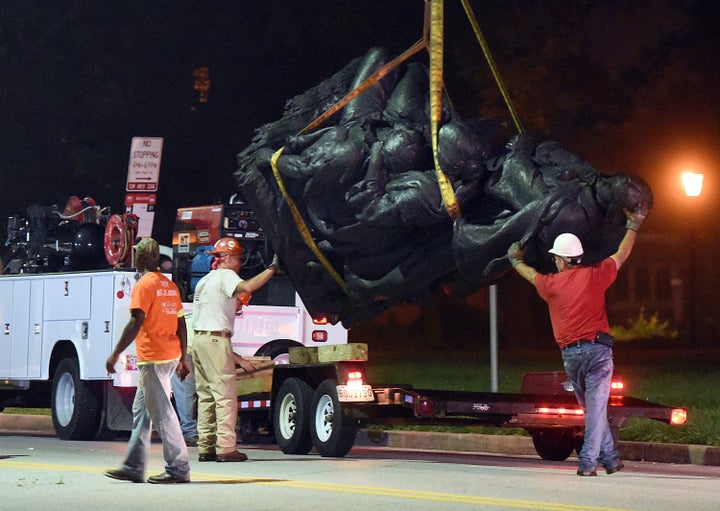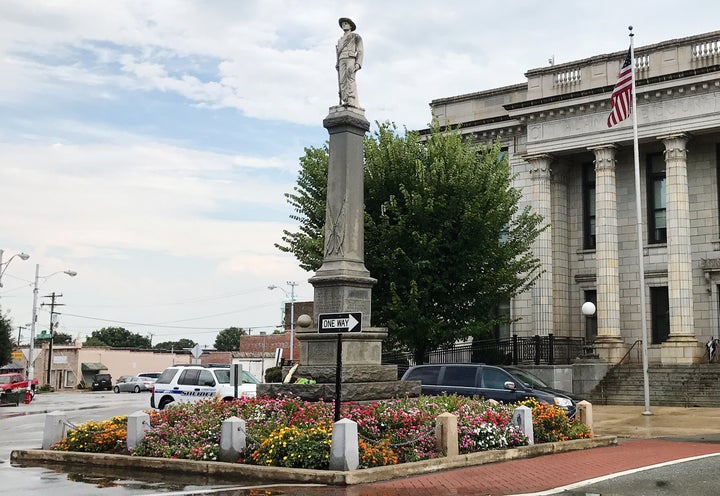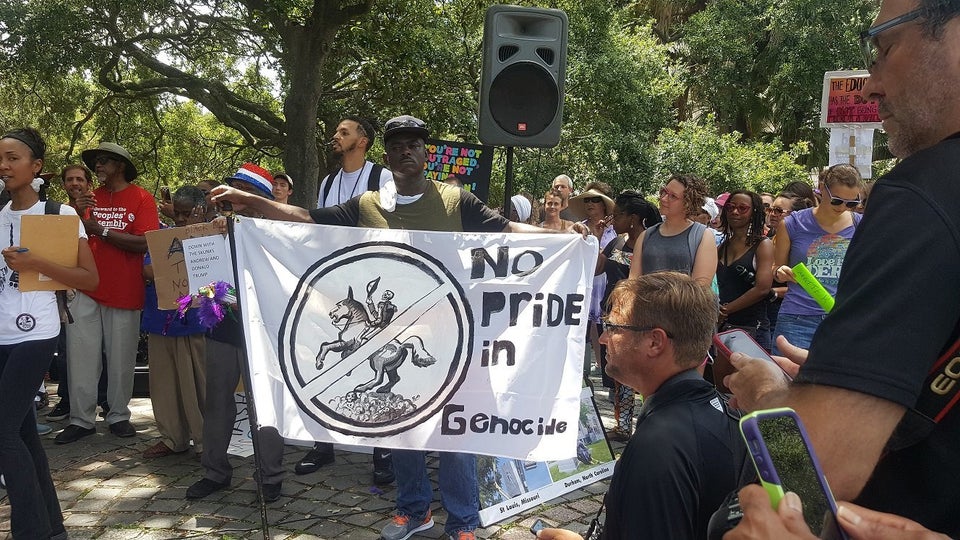
The Southern Poverty Law Center has released a new report that shows symbols of the Confederacy have been removed from cities across the U.S. at a rate of about three monuments each month.
According to the report, which the watchdog group released on Monday, a total of 110 monuments to the Confederacy have been taken down nationwide since 2015.
“It signifies change,” Heidi Beirich, who leads the Southern Poverty Law Center’s Intelligence Project, told HuffPost. “Here we are now taking seriously that our landscape is literally marred with symbols to the Confederacy.”
A movement against the Confederate symbols began in earnest after white nationalist Dylann Roof killed nine black parishioners in Charleston, South Carolina, in June 2015. Roof posed with photos where he raised the Confederate flag. Scrutiny grew again in August 2017, when a man allegedly linked to white supremacist groups rammed his car into a crowd of people protesting a white supremacist rally that was held in defense of a Confederate monument in Charlottesville, Virginia. One person was killed, and 19 others were injured.
The number of Confederate symbols that have been removed is not based solely on the toppling of Confederate statues. Included in the figure is the renaming of public schools and roads, the taking down of Confederate flags from public buildings and the 2015 repurposing of Confederate Memorial Day in Georgia, which was given the neutral title: “State Holiday.”
The study also excludes certain symbols from the grand total of existing monuments.
“We didn’t count anything in a museum or anything interpreted appropriately and historically, like those in Gettysburg,” Beirich said.
While the Southern Poverty Law Center’s report shows a slow, yet progressive change in the nation’s embrace of the Confederacy, the numbers pale in comparison to remaining Confederate symbols, which the study estimates at about 1,730.
The report doesn’t indicate how many symbols to the Confederacy have been erected since 2015.
According to an October 2017 report in The Washington Post, Confederate monuments are still being built across the country. While the story does not specify how many have gone up recently, it does point out that at least 50 have been built since 1990. All but seven of those were reportedly erected in formerly Confederate states, and 60 percent of them are on public land.
“We want to put up a lot of these across the country,” Michael Landree, the executive director of the national Sons of Confederate Veterans, told The Washington Post.
President Donald Trump has sided with those who want to continue honoring the Confederacy. Last year, he tweeted: “Sad to see the history and culture of our great country being ripped apart with the removal of our beautiful statues and monuments.”
Many state laws protect Confederate monuments. New laws have been passed in several states in recent years to ensure they cannot easily be removed.
“There are forces at work in our society who use political capital to protect them, which is disturbing,” Beirich said.
The most recent change in state law occurred in Tennessee late last month when Republican Governor Bill Haslam signed an amendment to the Heritage Protection Act. The implementation of that law not only bolstered protection of crucibles of racial tension but completely stripped oversight from state municipalities.
The amended Act, which Haslam signed into law on May 21, gave absolute power over the monuments to the Tennessee Historical Commission. Among the commission are purported members of the Sons of Confederate Veterans, an organization that’s kept the Confederate legacy alive for more than a century.
James G. Patterson, commander of the Tennessee Division of the Sons of Confederate Veterans, defended the new law, claiming monuments to the Confederacy are emblems of heritage and regional pride.
“These monuments were placed many years after the war was over,” Patterson told HuffPost. “They were placed to remember the soldiers and leaders from the community that fought to defend their homes and families.”

Civil rights leader Rashad Robinson, who serves as executive director of Color of Change, told HuffPost that symbols of the Confederacy are associated with slavery, Jim Crow and the violent suppression of the civil rights movement.
“They want to rewrite the history of the Confederacy,” Robinson told HuffPost. “They want us to ignore the violent attachment to slavery – the beatings, the rapes, the abuse, the forced labor and the stealing of heritage. We shouldn’t have these symbols in our cities.”
The terrible bloodletting of the Civil War ended more than 150 years ago, but the debate ― pride in the South vs. the shame of slavery – rages on. It seems that until the past is reckoned, racial strife and disunion will continue for the foreseeable future.
Send David Lohr an email or follow him on Facebook and Twitter. White supremacy won’t fall with just a few statues. Sign up for our email to get updated on our latest coverage.

